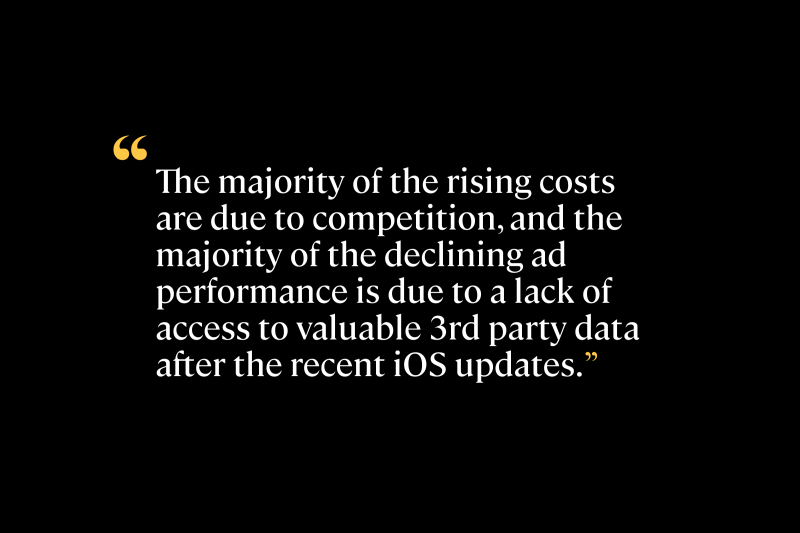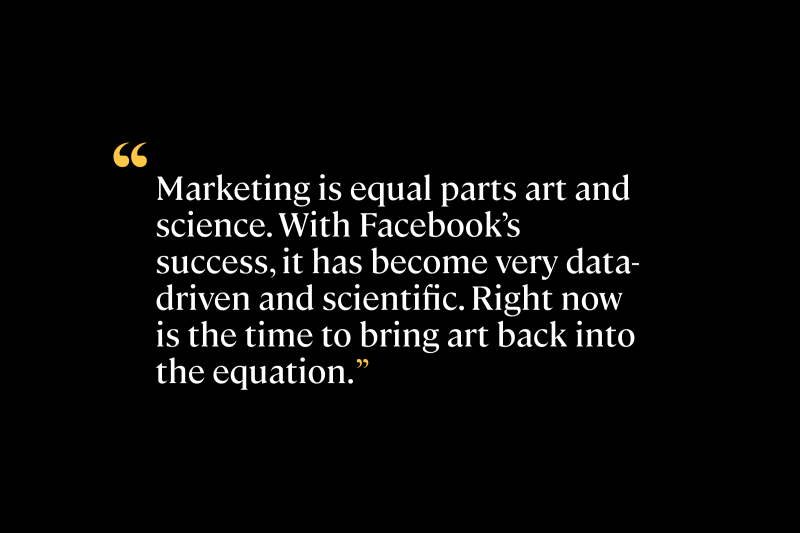/ Blog
An eCommerce Marketer Decodes Shopify Audiences For D2C Brands
Aakanksha Sharma
Content Marketer
- DATE PUBLISHED (3/5/2022)
- READ TIME (5MIN)
<iframe allowfullscreen="false" data-src="https://audio.beyondwords.io/m/4315706" frameborder="0" id="speechkit-io-iframe" scrolling="no" style="display: none"></iframe><script src="https://proxy.beyondwords.io/npm/@beyondwords/audio-player@latest/dist/module/iframe-helper.js" type="text/javascript"></script>
In an increasingly competitive market where targeting high-intent buyers is getting harder by the hour, D2C brands need an edge - and Shopify Audiences might be just that. Its official announcement and launch last month has had a positive impact among merchants who have recently started feeling the pain of increasing acquisition costs over the past year.
But if you’re here, you already know all that.
So let’s get down to brass tacks. We spoke to Dwarak Ganesh, our Senior Performance Marketing Consultant and eCommerce specialist on his thoughts about Shopify Audiences.
Here’s more.
A lot of D2C brands are struggling with rising ad spends and declining ad performance, especially on platforms like Facebook and Instagram. What has changed?
Quite a lot, actually. Rising costs can be traced back to increasing competition for ad space. One of the reasons for this is the fact that the internet has lowered the barriers of entry for businesses.
Earlier, if you wanted to set up a shop online, you would have to hire a proper team of developers and the costs involved were too high. Now, Shopify has simplified that entire process so much that you can just use their platform and start selling online. And it has led to a dramatic increase in people setting up online shops and advertising their businesses.
At the same time, we’re now witnessing a dip in ad performance. That is something we can attribute to iOS updates.
Around 2017-18, platforms were sophisticated enough to help marketers find all the customers they wanted. But marketers today are struggling because, with the iOS 15 updates, the tools that they relied upon aren’t as effective as they used to be.

Let’s talk about Shopify Audiences. Broadly, why does Shopify Audiences have the potential to be a gamechanger for D2C brands?
I guess it’s fair to first ask why we need a tool like Shopify Audiences if we want to examine its potential. And to that, I would say, it’s because the Facebook Pixel is not effective anymore.
The Facebook Pixel was incredible mainly because of its deep understanding of buyer intent, right? They knew when a customer’s buying intent was high, like when they were ready to transact.
So with that accuracy in tracking, the ads were placed at the right place, at the right time, and to the right person, and it would get you that sale.
What’s happening now is that people are opting out of tracking. And the Pixel’s ability to gather third-party data has declined. Both Apple's iOS updates and GDPR have deterred its effectiveness in finding customers ready to make a purchase. It's like we are flying blind with Facebook Pixel now.
Right. Sellers cannot get a return on their ad spend, and they need a solution, and that’s where Shopify Audiences comes in.
Exactly. At Coderapper, we work with Shopify Plus customers who have signed up for the Audiences program. Shopify has access to super valuable customer data from Shopify Plus stores that have signed up for Audiences. Using machine learning, Shopify now hopes to match your product and its attributes with buyer intent and create an audience of high-intent prospects. This is almost a goldmine for D2C brands and it can be used to target customers at the top of the funnel, almost like Lookalike audiences..
Sellers will be able to build custom audiences through this feature. Soon, Shopify will work with TikTok, Google Ads, and YouTube Ads.
I’m pretty excited about this. I’d say that this tool has the potential to be successful.
Because if it works the way it’s intended to, Audiences can find new customers for brands, improve prospecting, and decrease the cost per acquisition.
It will help small businesses grow. And it will help customers too. Because customers will not be served well if we are in a monopolized market where small businesses can not survive.
How can Shopify find audiences that Facebook can’t, at this point?
Shopify is one of the biggest eCommerce platforms, and it hosts some of the most popular D2C brands in the world. Every store generates thousands of email IDs and leads. People indulge in various buying behaviors and Shopify is able to understand who is buying, what product pages they are visiting, etc. Customers share their email addresses with Shopify businesses as first-party data, and it can categorize them based on their buying intent.
Compare this with Facebook.
Facebook as a platform has unique challenges, even outside the iOS updates. The company’s focus has been on consolidating what it has already created, or you know, staying in and competing with Snapchat and TikTok in trying to keep the engagement going. On top of that, they are constantly fighting legal and political battles over the last few years.
This gives Shopify a unique advantage, because at its heart Shopify is a non-controversial company with a great platform that adds value to both merchants and customers. As a result, they can probably have a better focus on improving their product.
Who knows, Shopify may be a better candidate to take on this role of helping online sellers acquire new users.
Is it too early to tag Shopify Audiences as a gamechanger?
Honestly, there’s no easy answer. It’s definitely interesting and I think sellers should try every tool at their disposal to see what works for them. I would say that Audiences is one of the things that every Shopify Plus merchant with access has to prioritize.
How long will it take Shopify Audiences to show results to merchants?
That depends entirely on how it performs today. But, initially, everybody is eager and willing to wait for the results, right?
So, shop owners in the US and Canada will be spending millions of advertising dollars on testing it. It will take its time. In the next 2-3 months, we'll know whether there is any momentum behind it or not.
How can eCommerce owners adapt to the new normal? What’s your advice?
Create a strong point of differentiation in this crowded market.

Brand values work. As a brand, you have to find out what you stand for, and really define your brand values. Product performance is another way to differentiate. Showcase how your product can help customers uniquely achieve their goals. And finally, work on improving the user experience. Treat your customers in the best way possible, and it’ll pay you back.
Marketing is equal parts art and science. With Facebook’s success, it’s become very data-driven and scientific. Right now is the time to bring art back into the equation.
If you can create differentiation along with any one of these factors, that will set you apart.